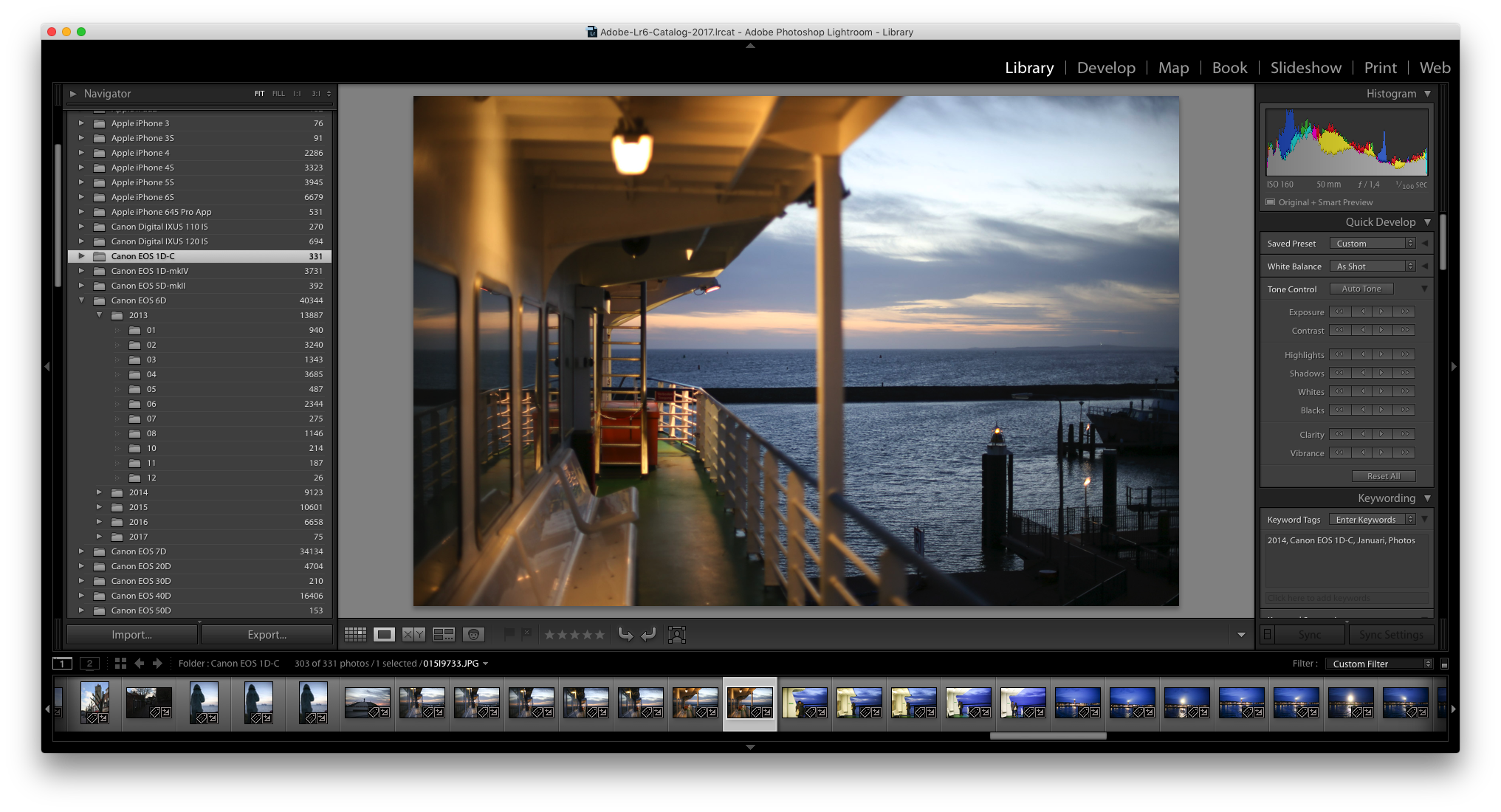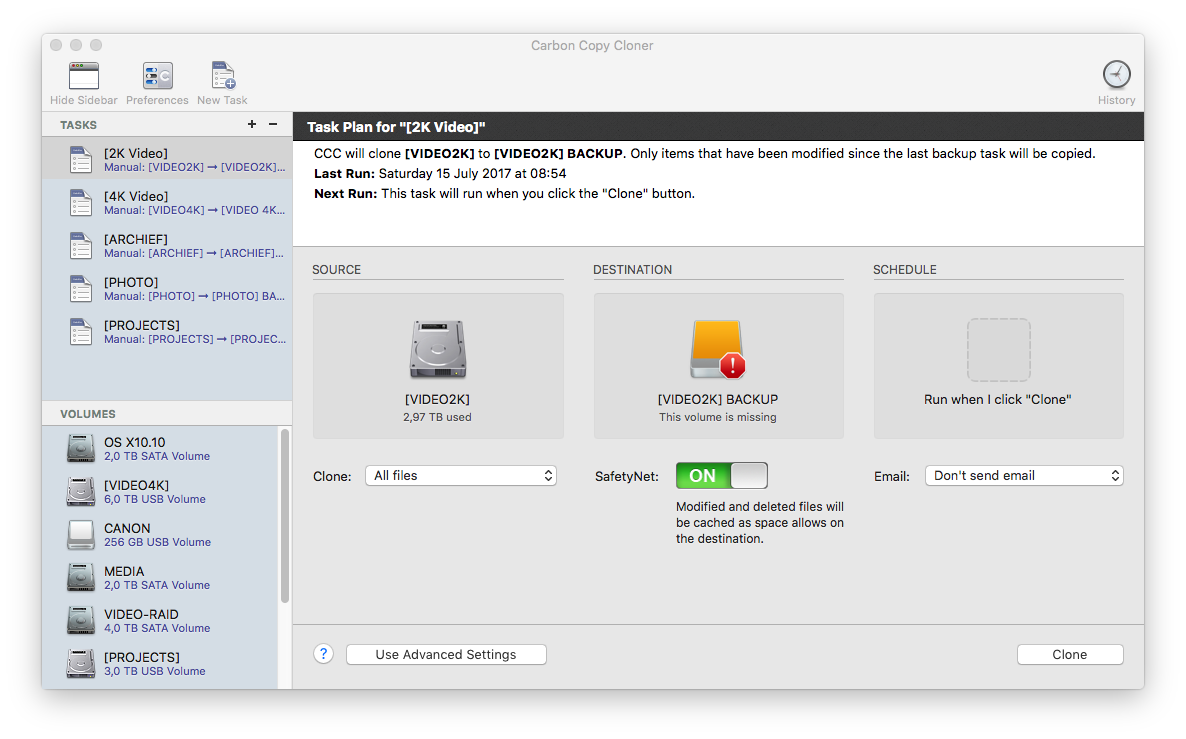How do you Get Digital Images from your Camera to your Computer?
Copy link to clipboard
Copied
Copy link to clipboard
Copied
step 1; take photo of something important (like the pie + chips).
step 2; send it to Facebook | or uncles phone with "lol" or "what U having?"
then ignore it for the rest of time... a new phone will arrive before the storage on this one is full
Copy link to clipboard
Copied
Ussnorway wrote
step 1; take photo of something important (like the pie + chips).
step 2; send it to Facebook | or uncles phone with "lol" or "what U having?"
Funny: We hear that same exact process all the time from some of the world's most celebrated fashion photographers.
(Our guess is that they have a few special clauses in their model release forms.)
Copy link to clipboard
Copied
I have been shooting quite some digital cameras from 2000 until now.
My current workflow is as follows:
I always shoot RAW (and Jpeg).
I use a camera who has WiFi built in. I used to have a Canon 6D, now I have the Panasonic LX100 and also have used many Canon compact camera's with built in WiFi, or when not available I used a Transcend WiFi SD card to transmit the photo's to my iPhone for online sharing. On the iPhone I try to do the same. I use apps to shoot RAW.
Once transferred to my iPhone I use several apps to make my final results. From there on I share them on different social media platforms.
Back home I have a Lexar tower where I can put in all my different cards to offload all photo's in to Lightroom.
I made maps of all different camera's and in side those: year and month submaps. Lightroom generates those inside the library.
Lightroom is the only tool available who can do this and has everything I need for producing a final version of my photo's.
Next to that I have more than 250.000 images in my library and most of them I can find with keywords (work in progress there)
I have one main drive, one full backup drive, one backup NAS drive and a subscription to Backblaze for an extra backup of everything (almost 20 Gigabyte of photo's, 2K and 4K video material).
I have a [PHOTOS], [2K VIDEO], [4K VIDEO], [ARCHIVE] and [PROJECTS] drives and all have backups.
Carbon copy is a brilliant tool for that. Fast and easy!
Here is a screenshot of my Lightroom Library. On the left you see the camera's and inside those maps: [year] and [month]. On the right I have the keywords: [camera], [year], [month], [type of footage:photo's, 2K video or 4K video], [event name], [extra info], [person name] etc.


Copy link to clipboard
Copied
https://forums.adobe.com/people/Gert+Kracht wrote
I always shoot RAW (and Jpeg).
I use a camera who has WiFi built in. I used to have a Canon 6D, now I have the Panasonic LX100 and also have used many Canon compact camera's with built in WiFi, or when not available I used a Transcend WiFi SD card to transmit the photo's to my iPhone for online sharing. On the iPhone I try to do the same. I use apps to shoot RAW.
That is one very impressive workflow.
It's great to have someone share a very professional use case.
Thank you.
Copy link to clipboard
Copied
Well, I have made many photo's and video's in all those years and I keep almost everything stored in my archive.
One thing I learned during all those years: make backups.
I almost lost everything after a drive crashed. That learned I decided to start all over again, make a decent library inside Lightroom.
After each session I make backups of that library (three at last) and I keep the backup drives somewhere else.
Also a very good tip about hard-disks: never buy them in bulk. When a production batch is failing, you will have a huge problem on your hands. Drives could start failing one after another. Mayhem ahead.
Buy drives at two dealers. I use mostly Western Digital drives and have two companies where I buy them. Always 100% mirrored. So: main drive 4 Terabyte then the secondary drive is also 4 a Terabyte. I have multiple 3, 4 and 6 TB drives all parallel.
A raid solution is also nice. It offers extra security. But a good raid drive costs. When one or two drives fail and are replaced by new drives the raid drive will have to be rebuilt. With many cheaper drives that means no drive available for a long time.

Carbon copy works simple. Select the main drive with all the content and a backup drive on the right (which is now not connected, so that's why it is marked red. The whole process is automatic. Just connect the drive and click on 'Clone'. Also works for multiple sessions at the same time.
Copy link to clipboard
Copied
https://forums.adobe.com/people/Gert+Kracht wrote
Well, I have made many photo's and video's in all those years and I keep almost everything stored in my archive.
Yes. The need for not just backups but redundancies is essential to responsible media libraries.
Copy link to clipboard
Copied
Gert - That is an impressive library... very tidy. Would love to use your screen shots when showing examples in my class...
Copy link to clipboard
Copied
You can use them anytime. Send me an email and I can make any screenprint you need for your class.
Please send it to adobe@gertkracht.nl
And please let me know what you need.
That goes for the rest of you too.
Happy to share my workflow.
Copy link to clipboard
Copied
Canon Digital Rebel xTi, which uses a CF Card. Large Raw and Jpeg
In camera I delete anything obviously out of focus or otherwise messed up.
Using a cord I plug it in and dump everything into a folder until I can get to it.
I back up that folder on an external and internal solid state drive.
When I get to them, I page through (full screen) and delete the photo pairs (raw and jpeg) too messed up to even be a decent snapshot.
Not so familiar with all the gadgets and gizmos on Photoshop CS6 yet. It was on this computer when my nephew gave it to me. Since photography is a hobby for me, there is no rush to get through the photos I take. Just having fun and getting back into photography again since just about everything I had crashed and irrevocably lost over 50,000 photos and digital art from the photos several years ago.
Copy link to clipboard
Copied
https://forums.adobe.com/people/Pamela+28 wrote
Not so familiar with all the gadgets and gizmos on Photoshop CS6 yet.
Thank you Pamela.
Are you able to keep your Adobe Camera Raw versions up to date with CS6?
Copy link to clipboard
Copied
Mr. Stoppee,
Not quite sure what you are asking so sorry if this doesn't answer your question...
When I get to new photos, I open the raw image (which opens in a different screen than the normal Ps screen) fix exposure et al, save it as a jpeg, compare it to the in camera jpeg and delete the lesser of the two. But I have only been doing it this way recently.
I used to use the Canon software for raw, but can't seem to get that to work on this computer. Its very old and says it's not compatible.
Copy link to clipboard
Copied
https://forums.adobe.com/people/Pamela+28 wrote
Not quite sure what you are asking so sorry if this doesn't answer your question...
When I get to new photos, I open the raw image (which opens in a different screen than the normal Ps screen) fix exposure et al, save it as a jpeg, compare it to the in camera jpeg and delete the lesser of the two. But I have only been doing it this way recently.
I apologize for the confusion.
Is the "different screen" you refer to Adobe Camera Raw? (That would seem like the logical step for opening a raw Canon image in Photoshop.)
Copy link to clipboard
Copied
Yes ![]() never actually looked at it before. Adobe Camera Raw 7.0
never actually looked at it before. Adobe Camera Raw 7.0
The normal Ps page also opens, then the Camera Raw window opens with the image.
Flying blind on all of this and kinda having fun doing it, after all, as long as I don't save changes to the original, mistakes can be undone ![]()
Copy link to clipboard
Copied
https://forums.adobe.com/people/Pamela+28 wrote
https://forums.adobe.com/people/Brian+Stoppee
Yes never actually looked at it before. Adobe Camera Raw 7.0
The normal Ps page also opens, then the Camera Raw window opens with the image.
Flying blind on all of this and kinda having fun doing it, after all, as long as I don't save changes to the original, mistakes can be undone
Thank you for that reply. That's what I was curious about: your use of Camera Raw 7.0.
Are you able to install Camera Raw 9.12?
Copy link to clipboard
Copied
Maybe? Do I need to? What does it have that's different than 7.0? Will it work on windows 7 OS? Old stuff here ![]()
Copy link to clipboard
Copied
https://forums.adobe.com/people/Pamela+28 wrote
https://forums.adobe.com/people/Brian+Stoppee
Maybe? Do I need to? What does it have that's different than 7.0? Will it work on windows 7 OS? Old stuff here
I'm not up to speed on what ACR versions work on CS6 apps and if they are relative to individual operating systems are hardware configurations. (I do know some issues, along those lines exist).
However, some new versions have new features and even a new user interface.
Copy link to clipboard
Copied
Perhaps when I need to upgrade my hardware, I'll look into upgrading my software too. but for now, I am content with the version I have, and will probably only use a fraction of what's available. Like I said, It was on the computer when my nephew gave it to me. (or I would still be using elements 5)![]()
Copy link to clipboard
Copied
I pop the cards out of the cameras as I pack the gear away, and use a USB 3.0 card reader. It's way too awkward lugging cameras to my computer, and way too slow to transfer the data.
BTW what is the current state of the art for card readers? I'm still using an X79 motherboard, so USB 3.0 is my current maximum. Are modern cards limited by USB3.0 ? I am looking at a 128Gb Lexar Pro on the desk in front of me that has 1066X and UDMA 7 (I think it's a 7. The print is pretty worn). Do they make card readers for USB3.1 and is there any point if they do? I'll have a wee look with Google 🙂
Copy link to clipboard
Copied
Trevor.Dennis wrote
BTW what is the current state of the art for card readers? I'm still using an X79 motherboard, so USB 3.0 is my current maximum.
Thank you for a very good question.
We have not asked this question of the CF/SD card manufacturers for a few years so this information may be quite old and the thinking has since changed. But a while ago, what we were hearing was that they're in the business of creating flash cards not readers. The readers are a thing which they have to do but it's not where the R&D efforts are focused.
From a quick look around, it appears to be a supply and demand driven thing and the demand isn't all that great.
